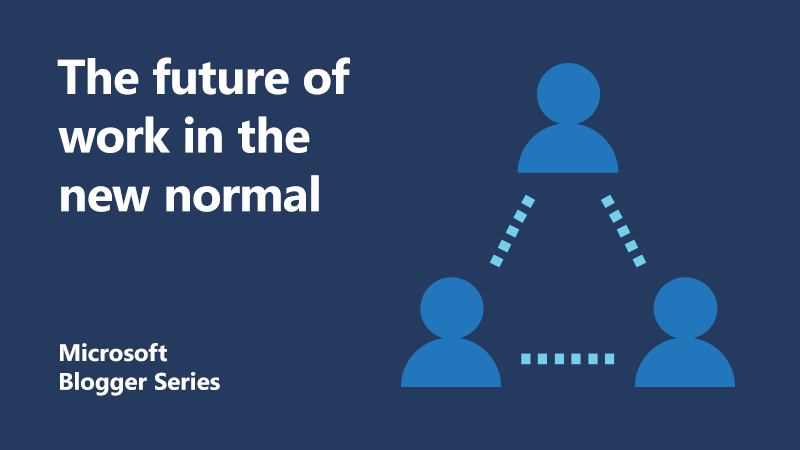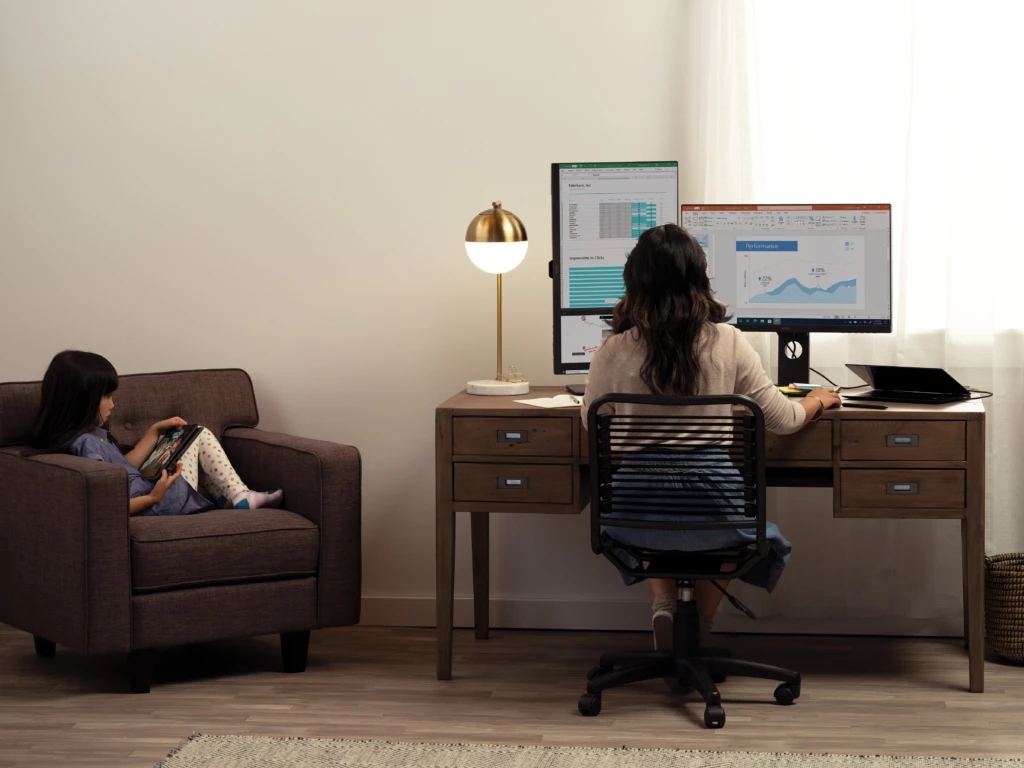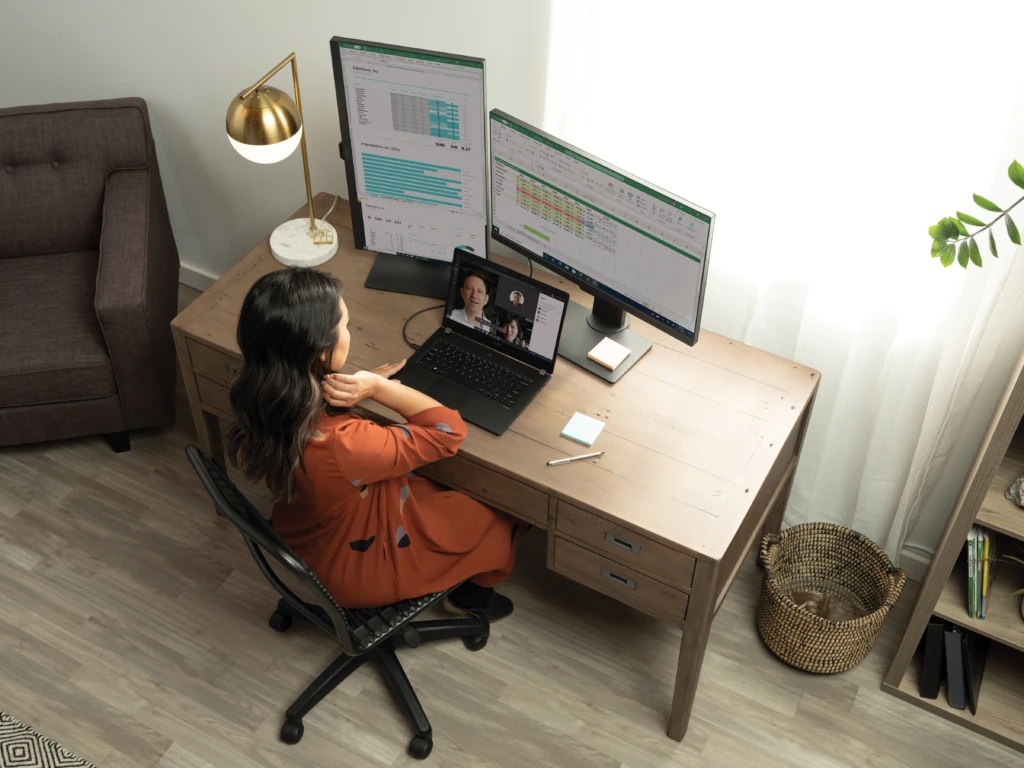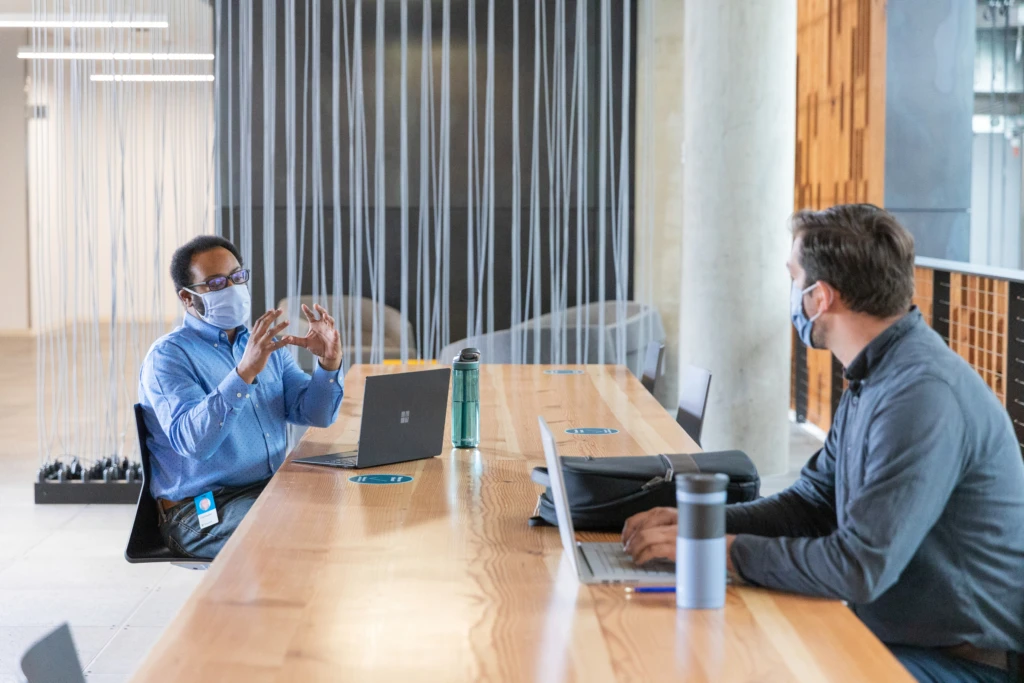
How to have productive and inclusive hybrid workplaces in the new normal
 For the past six months, the world has been going under immense change. We started seeing new business models emerging and multiple trends converging – supported and augmented by digital technologies. Using innovation and smart technology, organisations are able to differentiate themselves and reimagine their success in the new normal.
For the past six months, the world has been going under immense change. We started seeing new business models emerging and multiple trends converging – supported and augmented by digital technologies. Using innovation and smart technology, organisations are able to differentiate themselves and reimagine their success in the new normal.
To truly succeed, I believe we need to evolve our focus on how we can collectively be together, regardless of where we are. One of the challenges for businesses is to understand and, more importantly, know what they can do to create an inclusive environment. One where everyone can play their part, is able to continuously learn and can develop their potential. This in turn, will drive innovation and productivity as the nature of work itself continues to evolve.
As the year continues on, organisations are concerned about employee wellbeing. As everyone tries to get back on track and functioning in the new normal, anxiety and stress may rise. We all need to be aware of the implications for individuals, businesses and society. This is a marathon and not a sprint. That’s why responsible businesses need to take a holistic approach in moving to new ways of working, while ensuring people don’t suffer from burnout along the way
What are organisations top concerns in the new normal?
As many of us continue to work remotely, I’ve been listening to what concerns business executives are sharing. Here are the top four I’ve heard from across all industries and businesses:
- Maintaining the health and wellbeing of their employees
- Increasing productivity
- Retaining talent
- Cutting costs
It’s becoming increasingly important for employees to feel safe, cared for and healthy at work and at home. I’ve found that there is a growing consensus by business leaders that employee health must be a top priority. Mental health is a critical part of that equation. Microsoft Research shows on average, mental health disability costs more than $1 trillion every year in lost productivity.
1. How to maintain employee health and wellbeing in the new normal
Wellness programs, mindfulness practices and regular interactions with family, friends and colleagues are all helping employees stay engaged, be creative and productive at work.
At Microsoft, we’re using Yammer to learn from one another’s experiences and discover the offers and new programmes developed for our wellbeing. This includes meditation practice, Pilates and even Zumba classes! It is also a great platform for sharing what’s on our minds and our experiences with our wider Microsoft community.
2. Empower employees with the right tools
 After finding ourselves working remotely, we’ve been empowered to stay productive and connected using Microsoft 365. I’ve found Microsoft Teams especially useful for daily communication and collaboration and for creating space for water cooler conversations.
After finding ourselves working remotely, we’ve been empowered to stay productive and connected using Microsoft 365. I’ve found Microsoft Teams especially useful for daily communication and collaboration and for creating space for water cooler conversations.
As we are helping our customers set up for remote work, we’ve found that the ability to record meetings has become essential. All attendees can access recordings of meetings they’ve missed and then listen in to the most relevant parts. Recorded meetings also come with a transcript that’s easy to search. Live meetings or events even have closed captions to ensure everyone can take part.
Take Manulife, for example. The company makes smart use of cloud capabilities like Azure and Microsoft Teams to build digital experiences and help its employees and customers work together and stay connected from anywhere.
3. Optimise operations to succeed in the new normal
One way you can improve your employee’s experience is to make collaboration seamless by breaking down barriers between apps. The Fluid Framework integrations in Microsoft 365 enables collaboration on dynamic content. Tables, charts, and task lists can be easily inserted in Outlook for the web, so your sales numbers, project tasks and research reports are always up to date.
We have seen and will keep seeing that technology plays a huge role in enabling business productivity and resilience. Companies need to emphasise the use of tools to aid remote management. They also need to develop a learning-centric culture to build resiliency in the day-to-day operations. Leonard Cheshire, a UK non-profit organisation that provides care and support for people with disabilities around the world, have been using Microsoft Dynamics 365 and the Microsoft Power Platform to streamline their processes and create smarter apps that make care services easier to access and deliver.
“We’ve identified a lot more ways that we can make a difference using Dynamics 365 and the Microsoft Power Platform. We’re now using them to improve our financial operations, with customer relationship management and compliance monitoring capabilities to follow in the next few months.” – Laura Crandley, Executive Director, Partnerships, Leonard Cheshire.
4. Be more people-centric to attract and retain talent
Now is the time to ensure that technology is people-centric. Organisations need to get a handle on how best they can support their employees to work remotely. This includes building an environment for your employees to succeed. Try developing networks to enhance long distance working relationships or cultivating capabilities for remote managing their teams by leveraging communication tools and advanced technology, including AI.
If data is the new oil, then talent with the knowledge is gold. It is imperative that organisations understand their talent and where the knowledge exists so that they can tap into the information to be able to respond to disruptive events. It also helps capitalise on opportunities when they arise. Executives need to consider some questions about talent:
- What skillset and mindset will be needed to operate, grow and evolve in a time of continuous disruption?
- How can we augment our human ingenuity to position the organisation to meet evolving and future needs?
- How can we access a wider pool of talent to enable faster scale up and greater diversity thereby enriching and strengthening our local and global reach?
Technologies such as AI enable a rethinking of talent management. Technology can help businesses deploy skills, tools and talent where they are needed most, while also acting as a catalyst for learning and best-practice sharing. It’s important to have the right tools for your team to create a seamless employee experience. According to a recent Forrester study, employees save between five to nine hours on common weekly tasks when using Microsoft 365 and Surface together, with 75% of workers stating their experience had improved.
These are challenging times, and it would be wrong to assume that this is business as usual. Organisations that succeed in building a great employee experience will create meaningful impact now and well into the future.
Leveraging data and AI
 Organisations are sitting on gold mines of underutilised data. This is where the unexploited knowledge is and where the answers lie. The best way to help your employees is to help them succeed. Prioritisation and optimisation of work need to be the priority but also, to help people deliver work effectively from anywhere. True innovation begins with data. After all, machine learning algorithms are only as good as the data inputs they receive.
Organisations are sitting on gold mines of underutilised data. This is where the unexploited knowledge is and where the answers lie. The best way to help your employees is to help them succeed. Prioritisation and optimisation of work need to be the priority but also, to help people deliver work effectively from anywhere. True innovation begins with data. After all, machine learning algorithms are only as good as the data inputs they receive.
This is the perfect time to use AI. Allow the machines to learn and the humans to lead. More and more companies are also leveraging big data analytics. This is becoming one of the most significant ways to boost productivity. Adoption of automation technologies and AI-driven software that perform processing workflows have accelerated and driven contactless interactions.
Businesses continue to operate at reasonable productivity levels through hybrid work arrangements. Digital platforms are becoming increasingly more efficient and effective at leveraging AI and automating routine and predictable tasks. They are also finding new ways to deliver high value to their customers and employees through lower-effort solutions. Hexicon, global chemical manufacturer, streamlined and automated its various business processes.
Some insurers are starting to explore how they can use AI in more innovative ways while some are already providing these kind of services, which combine AI technology and scientific research focusing on developing tailored workplace improvements for organisations and for their employees. For example, LV= is using AI to reduce the number of ‘grey area’ accidents for its customers.
Amplifying human ingenuity
At Microsoft we are focusing on empowering our teams and freeing up Microsoft’s most valuable asset, it’s people, to become more productive. The real power of AI technology is that it amplifies our ingenuity and extends our capacity so that we can achieve more.
Using technology to increase situational awareness and maintain a productive, safe, clean, and incident free working environment while ensuring personal privacy, transparency, and trust is more important than ever in the new normal. These technological innovations need to be developed with strict ethical standards and guidance on how to implement responsibly.
Microsoft rolled out its spatial analysis feature, an Azure Cognitive Service, to meet the needs of businesses across a variety of industries. Spatial analysis uses Computer Vision AI on real-time video and offers the ability to understand people’s movements in a physical space. This significantly increases efficiency and resolution of customer data. Spatial analysis runs on the Intelligent Edge. RXR, the third-largest real estate owner in New York City used Microsoft Azure to create and deploy new safety measures for tenants after it’s buildings reopened for business. They used an intelligent, secure, hyperscalable solution, created in just a few months.
Reimagining for innovation, resilience, and inclusivity
This year has seen a dramatic change to the way many jobs are done. While we’ve seen an acceleration of trends and new realities be created, it has also posed questions for every aspect of business models in the new normal.
Organisations are now planning how best to extract benefits from those changes as they prepare for the future of work. Innovation historically has driven changes beneficial to workers and society at large, and new workplace trends hold the promise of greater productivity that will power broader well-being. Greater digitisation and automation hold the potential to deliver better productivity, enhance resilience, generate economic value, and lower costs as we see the accelerated use of data analysis, AI and higher technology digital solutions.
Join the conversation at Envision
Digital technology is changing not just how organisations operate but how leaders lead. Join us at Envision, where executives across industries come together to discuss the challenges and opportunities in this era of digital disruption. You’ll hear diverse perspectives from a worldwide audience and gain fresh insights you can apply immediately in your organisation.
Connect with leaders across industries to get relevant insights on leadership in the digital era.
Find out more
Read the playbook: Resilience at work
Learn more: Reimagine productivity in the new world of work
Learn more: Harness the power of data
Read more: How to build and deliver a strong data strategy
Resources for your development team
Explore the learning path: Get started with Microsoft Data Analytics
Read the blog: Remote working resources for IT professionals and developers
About the author
 As a Digital Strategy and Transformation Advisor, Esra helps Microsoft’s strategic and enterprise customers within financial services and across other industry sectors to drive their digital transformation agenda. She helps them to deliver large scale digital change with the customer and employee at the heart of the solution.
As a Digital Strategy and Transformation Advisor, Esra helps Microsoft’s strategic and enterprise customers within financial services and across other industry sectors to drive their digital transformation agenda. She helps them to deliver large scale digital change with the customer and employee at the heart of the solution.





